Partners
In 2012 the Southeast Alaska Fish Habitat Partnership formalized its organizational structure under the guidance of founding partner organizations including the US Fish and Wildlife Service, US Forest Service, NOAA NMFS Alaska Region Habitat Conservation Division, Alaska Department of Fish and Game, Alaska Department of Environmental Conservation, Trout Unlimited, The Nature Conservancy, Southeast Alaska Watershed Coalition, Central Council Tlingit Haida Indian Tribes of Alaska and the City and Borough of Yakutat. As a result of these early efforts the partnership continues to grow bringing together a variety of federal, state and municipal governments, tribal, non-governmental and industry groups and individual citizens with a common interest in conserving fish habitat across Southeast Alaska.
The success of our efforts relies on the breadth and common focus of our partners. As such we are continually looking to build our partnership strength, please consider joining our efforts today.
Organizations in our growing partner network are listed here:
- U.S. Fish and Wildlife Service, Juneau Field Office
- U.S. Forest Service, Alaska Region/Tongass National Forest
- NOAA, NMFS, Alaska Region, Habitat Conservation Division
- Alaska Department of Fish and Game
- Alaska Department of Environmental Conservation
- Central Council Tlingit and Haida Indian Tribes of Alaska
- Sealaska
- City and Borough of Yakutat
- City and Borough of Juneau
- Southeast Alaska Watershed Coalition
- The Nature Conservancy
- Trout Unlimited
- Sitka Conservation Society
- Alaska Coastal Rainforest Center
- University of Alaska (Southeast and Fairbanks)
- Tatoosh School
- University of Alaska Southeast GIS Library
- Prince of Wales Watershed Association
- Sitka Sound Science Center
- Rivers Without Borders
- Southeast Alaska Land Trust
- Southeast Alaska Conservation Council
- North Pacific Landscape Conservation Cooperative
- Pacific States Marine Fisheries Commission
- Takshanuk Watershed Council
The Juneau Field Office of U.S. Fish and Wildlife Service (FWS), works with partners to protect, restore and manage the natural resources of 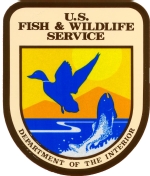 Southeast Alaska. The Habitat Restoration Branch of the Juneau Field Office is comprised of four program areas, including Partners for Fish and Wildlife, Coastal Conservation, Fish Passage, and Fish Habitat Partnerships. Through complementary delivery of these programs, we support and implement watershed assessment, habitat enhancement and restoration, and wetland protection projects through private-public partnerships.
Southeast Alaska. The Habitat Restoration Branch of the Juneau Field Office is comprised of four program areas, including Partners for Fish and Wildlife, Coastal Conservation, Fish Passage, and Fish Habitat Partnerships. Through complementary delivery of these programs, we support and implement watershed assessment, habitat enhancement and restoration, and wetland protection projects through private-public partnerships.
The Alaska Region of the U.S. Forest Service, one of nine regions across the United States, contains the two largest national forests in the nation: the 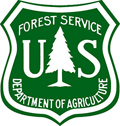 Chugach National Forest and the Tongass National Forest. The Tongass, located in southeast Alaska boasts an exceptional fisheries and watershed program that works to ensure wild salmon continue to return to abundant, high-quality habitat. Working in partnership with other agencies and non-profits, the Tongass also boasts a world-class habitat restoration and enhancement program. As a part of other services in the Tongass National Forest, the Mendenhall Glacier Visitor Center in Juneau serves 400,000 visitors annually by providing a range of interpretive services about glaciers and local ecosystems. The Tongass National Forest also provides rangers on cruise ships and the Alaska Marine Highway System to interpret landscapes and ecosystems for tourists. In addition, the conservation education programs associated with the Visitor Center serve hundreds of K-12 students both on-site and in the classroom.
Chugach National Forest and the Tongass National Forest. The Tongass, located in southeast Alaska boasts an exceptional fisheries and watershed program that works to ensure wild salmon continue to return to abundant, high-quality habitat. Working in partnership with other agencies and non-profits, the Tongass also boasts a world-class habitat restoration and enhancement program. As a part of other services in the Tongass National Forest, the Mendenhall Glacier Visitor Center in Juneau serves 400,000 visitors annually by providing a range of interpretive services about glaciers and local ecosystems. The Tongass National Forest also provides rangers on cruise ships and the Alaska Marine Highway System to interpret landscapes and ecosystems for tourists. In addition, the conservation education programs associated with the Visitor Center serve hundreds of K-12 students both on-site and in the classroom.
The NOAA, NMFS, Alaska Region, Habitat Conservation Division protects, restores, and promotes healthy and self-sustaining coastal and marine habitats that 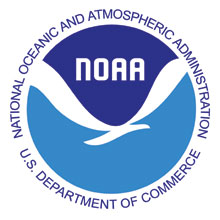 support vital ecosystem functions, including abundant living marine resources, human uses, and resilient coastal communities. Targeted efforts include work protecting and restoring fish habitat such as wetlands and coral reefs, opening streams and rivers for fish passage, planning for climate adaptation, and collaborating with partners and federal agencies on regional ecosystem conservation. Specific habitat related goals include: 1. Protect coastal and marine habitats to sustain ecosystem health, function, and services to communities and the nation; 2. Restore degraded coastal and marine habitats to enhance ecosystem health, function, and services to communities and the nation; 3. Expand science-based knowledge to more effectively assess, protect, and restore important coastal and marine habitats; and 4. Promote stewardship through outreach and education leading to increased habitat conservation.
support vital ecosystem functions, including abundant living marine resources, human uses, and resilient coastal communities. Targeted efforts include work protecting and restoring fish habitat such as wetlands and coral reefs, opening streams and rivers for fish passage, planning for climate adaptation, and collaborating with partners and federal agencies on regional ecosystem conservation. Specific habitat related goals include: 1. Protect coastal and marine habitats to sustain ecosystem health, function, and services to communities and the nation; 2. Restore degraded coastal and marine habitats to enhance ecosystem health, function, and services to communities and the nation; 3. Expand science-based knowledge to more effectively assess, protect, and restore important coastal and marine habitats; and 4. Promote stewardship through outreach and education leading to increased habitat conservation.
Alaska Department of Fish and Game maintains active and comprehensive management and research programs to ensure fish and wildlife 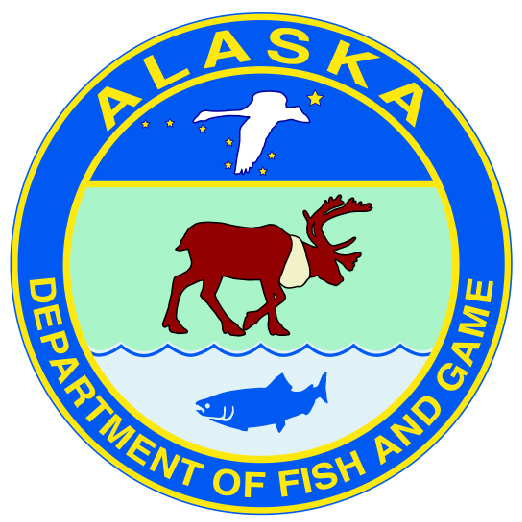 populations are “utilized, developed, and maintained on the sustained yield principle,” in accordance with Alaska’s Constitution. The department manages approximately 750 active fisheries, 26 game management units, and 32 special areas located throughout the state. ADF&G fish and wildlife management and applied research activities include: monitoring and actively managing wildlife populations; fisheries stock assessment and development of salmon escapement goals; applications of genetic and pathology methods; researching health parameters; monitoring and rehabilitating habitat; and determining how much water is needed to support fish and wildlife. In addition, monitoring and evaluating statistics on human uses provide opportunities to meet diverse resource needs in Alaska. Management and research of fish and wildlife is carried out by five divisions in the department: Commercial Fisheries, Sport Fish, Subsistence, Habitat, and Wildlife Conservation.
populations are “utilized, developed, and maintained on the sustained yield principle,” in accordance with Alaska’s Constitution. The department manages approximately 750 active fisheries, 26 game management units, and 32 special areas located throughout the state. ADF&G fish and wildlife management and applied research activities include: monitoring and actively managing wildlife populations; fisheries stock assessment and development of salmon escapement goals; applications of genetic and pathology methods; researching health parameters; monitoring and rehabilitating habitat; and determining how much water is needed to support fish and wildlife. In addition, monitoring and evaluating statistics on human uses provide opportunities to meet diverse resource needs in Alaska. Management and research of fish and wildlife is carried out by five divisions in the department: Commercial Fisheries, Sport Fish, Subsistence, Habitat, and Wildlife Conservation.
The Alaska Department of Environmental Conservation‘s mission is to conserve, improve, and protect Alaska’s natural resources and environment and 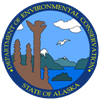 control water, land, and air pollution, in order to enhance the health, safety, and welfare of the people of the state and their overall economic and social well being. ADEC’s Nonpoint Source Water Pollution Control Program is the state’s primary program protecting water quality in Alaska’s streams and lakes from nonpoint source pollution and restoring polluted waters to a healthier condition by: Working with other State agencies to identify water quality needs and priorities for individual waters and statewide stewardship; Establishing a schedule and developing Total Maximum Daily Loads (TMDLs) and recovery plans on polluted waters; Implementing TMDLs and Recovery Plans through contracts and ACWA grants to partner agencies, local communities, and others; Managing the ACWA Grant Program that addresses priority stewardship, protection and restoration needs on waters throughout Alaska; Providing technical assistance to municipalities, local groups, and other state agencies involved in water quality projects; Responding to public concerns and complaints on nonpoint source pollution in streams and lakes. Documenting the health of Alaska’s Waters in the Integrated Report.
control water, land, and air pollution, in order to enhance the health, safety, and welfare of the people of the state and their overall economic and social well being. ADEC’s Nonpoint Source Water Pollution Control Program is the state’s primary program protecting water quality in Alaska’s streams and lakes from nonpoint source pollution and restoring polluted waters to a healthier condition by: Working with other State agencies to identify water quality needs and priorities for individual waters and statewide stewardship; Establishing a schedule and developing Total Maximum Daily Loads (TMDLs) and recovery plans on polluted waters; Implementing TMDLs and Recovery Plans through contracts and ACWA grants to partner agencies, local communities, and others; Managing the ACWA Grant Program that addresses priority stewardship, protection and restoration needs on waters throughout Alaska; Providing technical assistance to municipalities, local groups, and other state agencies involved in water quality projects; Responding to public concerns and complaints on nonpoint source pollution in streams and lakes. Documenting the health of Alaska’s Waters in the Integrated Report.
The Central Council of the Tlingit and Haida Indian Tribes of Alaska gained federal recognition as a tribe in 1935. We serve 21 communities that 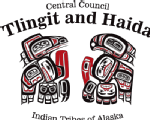 are spread over 43,000 square miles within the Alaska panhandle. The Tlingit and Haida citizenship is among the largest, most isolated, and most geographically dispersed Native or tribal populations nationwide. We are proud of our ability to incorporate professional administrative systems as we manage our resources and advocate the issues of our people. Our headquarters is in Juneau, Alaska, but our commitment to serving the Tlingit and Haida people extends throughout the United States.
are spread over 43,000 square miles within the Alaska panhandle. The Tlingit and Haida citizenship is among the largest, most isolated, and most geographically dispersed Native or tribal populations nationwide. We are proud of our ability to incorporate professional administrative systems as we manage our resources and advocate the issues of our people. Our headquarters is in Juneau, Alaska, but our commitment to serving the Tlingit and Haida people extends throughout the United States.
Values in Action.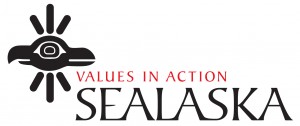
Sealaska has strengthened business with culture since 1972. We are a Native institution owned by more than 21,000 tribal member shareholders whose core cultural values guide all that Sealaska does and represent the rich heritage of our Tlingit, Haida and Tsimshian people. We live our values to build excellence in our Native enterprise and take action towards our purpose: to strengthen our people, culture and homelands.
The City and Borough of Yakutat, The City and Borough of Yakutat is located on the northern coast of the Gulf of Alaska. The 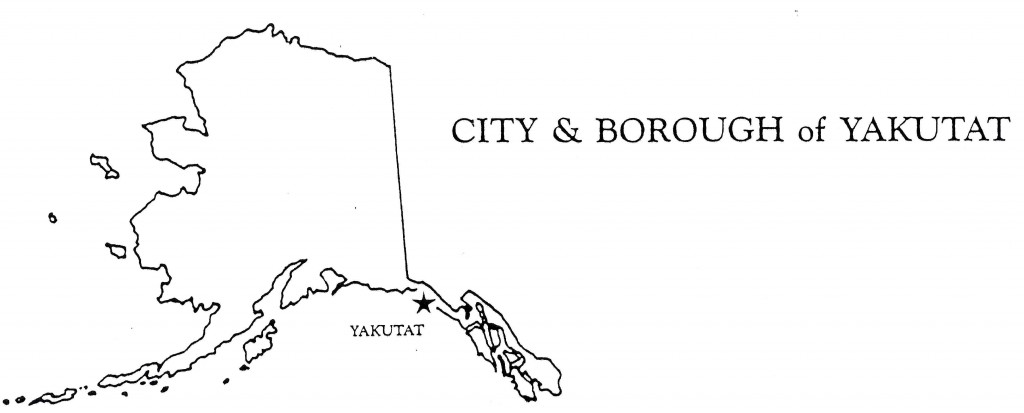 Borough encompasses about 9,460 square miles. Its boundaries are the Canadian border to the north, Cape Suckling to the west a line just north of Cape Fairweather to the east. Yakutat Borough is within and surrounded by the Tongass National Forests, Wrangell St-Elias National Park and Preserve, and Glacier Bay National Park and Preserve.
Borough encompasses about 9,460 square miles. Its boundaries are the Canadian border to the north, Cape Suckling to the west a line just north of Cape Fairweather to the east. Yakutat Borough is within and surrounded by the Tongass National Forests, Wrangell St-Elias National Park and Preserve, and Glacier Bay National Park and Preserve.
The Southeast Alaska Watershed Coalition provides coordination and support to a network of community-based efforts sharing a 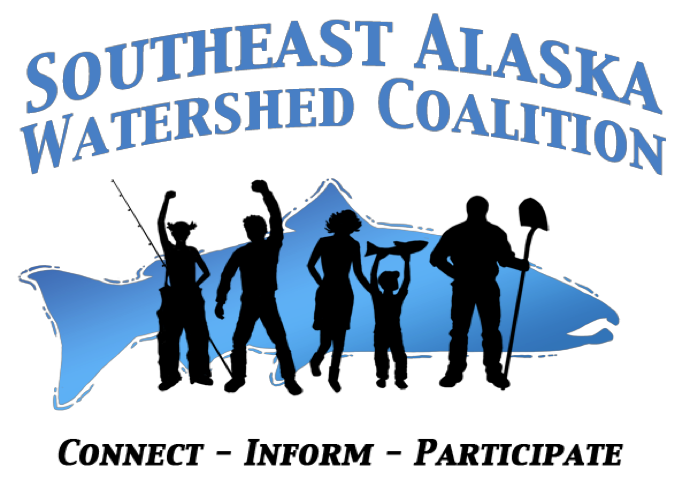 common goal to achieve informed management of the resources in Southeast Alaska. Their network of partners envision a unified Southeast Alaskan voice that promotes the long-term sustainability of rural communities and wise management of the region’s watersheds all while seeking a balance of human and wildlife use within the watersheds in order to benefit communities, natural resource-based economies and quality of life.
common goal to achieve informed management of the resources in Southeast Alaska. Their network of partners envision a unified Southeast Alaskan voice that promotes the long-term sustainability of rural communities and wise management of the region’s watersheds all while seeking a balance of human and wildlife use within the watersheds in order to benefit communities, natural resource-based economies and quality of life.
The mission of The Nature Conservancy is to preserve the plants, animals and natural communities that represent the diversity of life on Earth by  protecting the lands and waters they need to survive. To help implement this mission in the region, the Conservancy published “The Coastal Forests and Mountains Ecoregion of Southeastern Alaska and the Tongass National Forest: A Conservation Assessment and Resource Synthesis,” which focuses on ecological values of the regions 22 biogeographic regions and is a leader among non-governmental organizations collaborating with land owners in the region on fish habitat restoration projects.
protecting the lands and waters they need to survive. To help implement this mission in the region, the Conservancy published “The Coastal Forests and Mountains Ecoregion of Southeastern Alaska and the Tongass National Forest: A Conservation Assessment and Resource Synthesis,” which focuses on ecological values of the regions 22 biogeographic regions and is a leader among non-governmental organizations collaborating with land owners in the region on fish habitat restoration projects.
Trout Unlimited‘s Alaska Program works to preserve, protect and restore wild salmon and trout populations throughout Alaska. Through sound 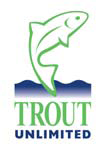 scientific data, strong grassroots outreach and advocacy, and hands-on involvement in conservation projects Trout Unlimited Alaska protects some of the most pristine and prized rivers on the planet, restores those that need some help, and engages the next generation of coldwater stewards in Alaska’s natural heritage. Salmon are an integral part of daily life in southeast Alaska and Trout Unlimited is developing plans to protect, restore and reconnect key salmon producing watersheds. Trout Unlimited’s Tongass 77 campaign seeks to gain permanent Congressional protection of 1.8 million acres of high-value salmon and trout habitat in Southeast Alaska’s coastal temperate rain forest.
scientific data, strong grassroots outreach and advocacy, and hands-on involvement in conservation projects Trout Unlimited Alaska protects some of the most pristine and prized rivers on the planet, restores those that need some help, and engages the next generation of coldwater stewards in Alaska’s natural heritage. Salmon are an integral part of daily life in southeast Alaska and Trout Unlimited is developing plans to protect, restore and reconnect key salmon producing watersheds. Trout Unlimited’s Tongass 77 campaign seeks to gain permanent Congressional protection of 1.8 million acres of high-value salmon and trout habitat in Southeast Alaska’s coastal temperate rain forest.
Sitka Conservation Society (SCS) has been working to protect the temperate rainforest of southeast Alaska and Sitka’s quality of life since 1967. 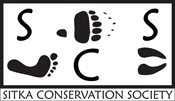 SCS is based in the small coastal town of Sitka, Alaska, located on the west coast of Baranof Island in the heart of the Tongass National Forest. Two interconnected and overarching themes characterize their goals – to develop, promote, and implement a vision of social, economic, and environmental sustainability for Sitka and to make Sitka a model of sustainable living for other rural communities – and to advocate for appropriate Tongass management. To achieve these goals, SCS utilizes a mix of grassroots advocacy, proactive and collaborative efforts, on-the-grounds field work, public education, and active participation in policy development. Leading by example locally and beyond, SCS works to engage and encourage public involvement in decisions that determine how commonly-held resources are managed.
SCS is based in the small coastal town of Sitka, Alaska, located on the west coast of Baranof Island in the heart of the Tongass National Forest. Two interconnected and overarching themes characterize their goals – to develop, promote, and implement a vision of social, economic, and environmental sustainability for Sitka and to make Sitka a model of sustainable living for other rural communities – and to advocate for appropriate Tongass management. To achieve these goals, SCS utilizes a mix of grassroots advocacy, proactive and collaborative efforts, on-the-grounds field work, public education, and active participation in policy development. Leading by example locally and beyond, SCS works to engage and encourage public involvement in decisions that determine how commonly-held resources are managed.
The Alaska Coastal Rainforest Center (ACRC) is a relatively new institute housed at the University of Alaska Southeast, in Juneau.  ACRC builds science partnerships across the north Pacific temperate rainforest region. We facilitate the development of large-scale research programs and infrastructure in support of transboundary ecosystem research, and we link community needs with applied science to drive local economic development and regional sustainability. Our many partners include federal, state, non-profit, and tribal organizations throughout the Chugach, Tongass and Great Bear rainforests.
ACRC builds science partnerships across the north Pacific temperate rainforest region. We facilitate the development of large-scale research programs and infrastructure in support of transboundary ecosystem research, and we link community needs with applied science to drive local economic development and regional sustainability. Our many partners include federal, state, non-profit, and tribal organizations throughout the Chugach, Tongass and Great Bear rainforests.
The Southeast Alaska GIS Library is a cooperative project sponsored by the Alaska Department of Environmental Conservation, the 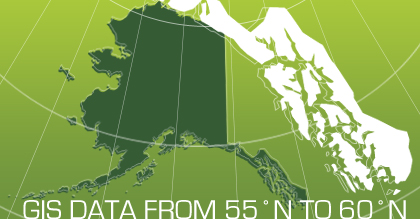 Alaska Department of Fish and Game, the Alaska Department of Natural Resources, the Alaska Department of Transportation and Public Facilities, the Geographic Information Network of Alaska, The Nature Conservancy of Alaska, the National Marine Fisheries Service of NOAA, the US Forest Service, the US Fish and Wildlife Service, the US Geological Survey and the University of Alaska Southeast. Our goal is to promote the use of regional geospatial data and applications to further research and improve management of public resources in Southeast Alaska. In addition, the GIS Library provides a framework for coordinating the acquisition and sharing of spatial data between the public, researchers, educators, and managers. It also provides a forum for discussing regional data standards, future data needs, and opportunities for collaboration.
Alaska Department of Fish and Game, the Alaska Department of Natural Resources, the Alaska Department of Transportation and Public Facilities, the Geographic Information Network of Alaska, The Nature Conservancy of Alaska, the National Marine Fisheries Service of NOAA, the US Forest Service, the US Fish and Wildlife Service, the US Geological Survey and the University of Alaska Southeast. Our goal is to promote the use of regional geospatial data and applications to further research and improve management of public resources in Southeast Alaska. In addition, the GIS Library provides a framework for coordinating the acquisition and sharing of spatial data between the public, researchers, educators, and managers. It also provides a forum for discussing regional data standards, future data needs, and opportunities for collaboration.
The Prince of Wales Watershed Association (POWWA) incorporates the cities of Hollis, Coffman Cove, Thorne Bay, and Hydaburg; as well as the 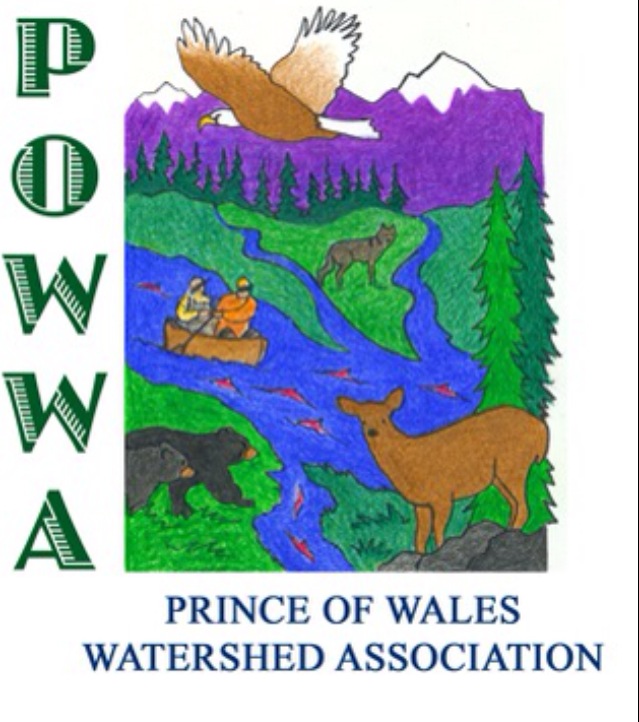 four federally recognized tribes of Craig Tribal association, Kalwock Indian Association, Organized Village of Kasaan, and the Hydaburg Community Association, in partnership with the unincorporated communities of Naukati Bay and Whale Pass, the USDA Forest Service and National Forest Foundation, SEACC, and The Nature Conservancy. These entities have contributed to the vision, mission, and goals of working together toward healthy watersheds and healthy communities while sharing success stories across the overlapping boundaries on POW island in Southeast Alaska, working on both forest level projects and community water and sewer improvements.
four federally recognized tribes of Craig Tribal association, Kalwock Indian Association, Organized Village of Kasaan, and the Hydaburg Community Association, in partnership with the unincorporated communities of Naukati Bay and Whale Pass, the USDA Forest Service and National Forest Foundation, SEACC, and The Nature Conservancy. These entities have contributed to the vision, mission, and goals of working together toward healthy watersheds and healthy communities while sharing success stories across the overlapping boundaries on POW island in Southeast Alaska, working on both forest level projects and community water and sewer improvements.
The Tatoosh School is a nonprofit organization that offers field-based university classes, and is part of a growing network committed to education, 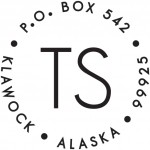 community and research in Southeast Alaska. It is the school’s mission to foster first-hand learning about the ecology and environmental policy of southern Southeast. Tatoosh students support local and regional stewardship work through participation in several established long-term ecological research programs.
community and research in Southeast Alaska. It is the school’s mission to foster first-hand learning about the ecology and environmental policy of southern Southeast. Tatoosh students support local and regional stewardship work through participation in several established long-term ecological research programs.
The Sitka Sound Science Center is dedicated to increasing 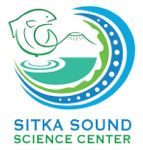 understanding and awareness of terrestrial and aquatic ecosystems of the Gulf of Alaska through education and research. Our vision is to build on Sitka’s legacy and potential as an educational and scientific community.
understanding and awareness of terrestrial and aquatic ecosystems of the Gulf of Alaska through education and research. Our vision is to build on Sitka’s legacy and potential as an educational and scientific community.
Rivers Without Borders has been striving to protect the wild intact watersheds and rich ecological and cultural values of the British Columbia-Alaska transboundary region since 1999. They engage First Nations, commercial fishermen, scientists, environmental organizations, government, community leaders, media, and others to advance their conservation vision for this vast, remote, and spectacular area.
to protect the wild intact watersheds and rich ecological and cultural values of the British Columbia-Alaska transboundary region since 1999. They engage First Nations, commercial fishermen, scientists, environmental organizations, government, community leaders, media, and others to advance their conservation vision for this vast, remote, and spectacular area.
The Southeast Alaska Land Trust cooperates  with communities, landowners, and others to ensure that habitat, recreation, open space, and historic areas remain in place for the well-being of each generation.
with communities, landowners, and others to ensure that habitat, recreation, open space, and historic areas remain in place for the well-being of each generation.
The Southeast Alaska Conservation Council  works to defend the world’s last great salmon strongholds, protecting the foundation of a $1 billion fishing industry that powers our local communities, and supplies salmon to the world. Members include the fishermen, hunters, scientists, small sawmillers, Alaska Natives, hikers, paddlers, and business owners who live, work, and play in Southeast Alaska.
works to defend the world’s last great salmon strongholds, protecting the foundation of a $1 billion fishing industry that powers our local communities, and supplies salmon to the world. Members include the fishermen, hunters, scientists, small sawmillers, Alaska Natives, hikers, paddlers, and business owners who live, work, and play in Southeast Alaska.
The North Pacific Landscape Conservation 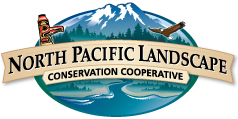 Cooperative promotes development, coordination, and dissemination of science to inform landscape level conservation and sustainable resource management in the face of a changing climate and related stressors.
Cooperative promotes development, coordination, and dissemination of science to inform landscape level conservation and sustainable resource management in the face of a changing climate and related stressors.
The Pacific States Marine Fisheries Commission’s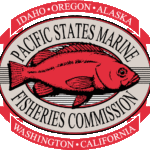 purpose is “to promote the better utilization of fisheries – marine, shell, and anadromous, which are of mutual concern, and to develop a joint program of protection and prevention of physical waste of such fisheries in all of those areas of the Pacific Ocean over which the compacting states jointly or separately now have or may hereafter acquire jurisdiction.”
purpose is “to promote the better utilization of fisheries – marine, shell, and anadromous, which are of mutual concern, and to develop a joint program of protection and prevention of physical waste of such fisheries in all of those areas of the Pacific Ocean over which the compacting states jointly or separately now have or may hereafter acquire jurisdiction.”
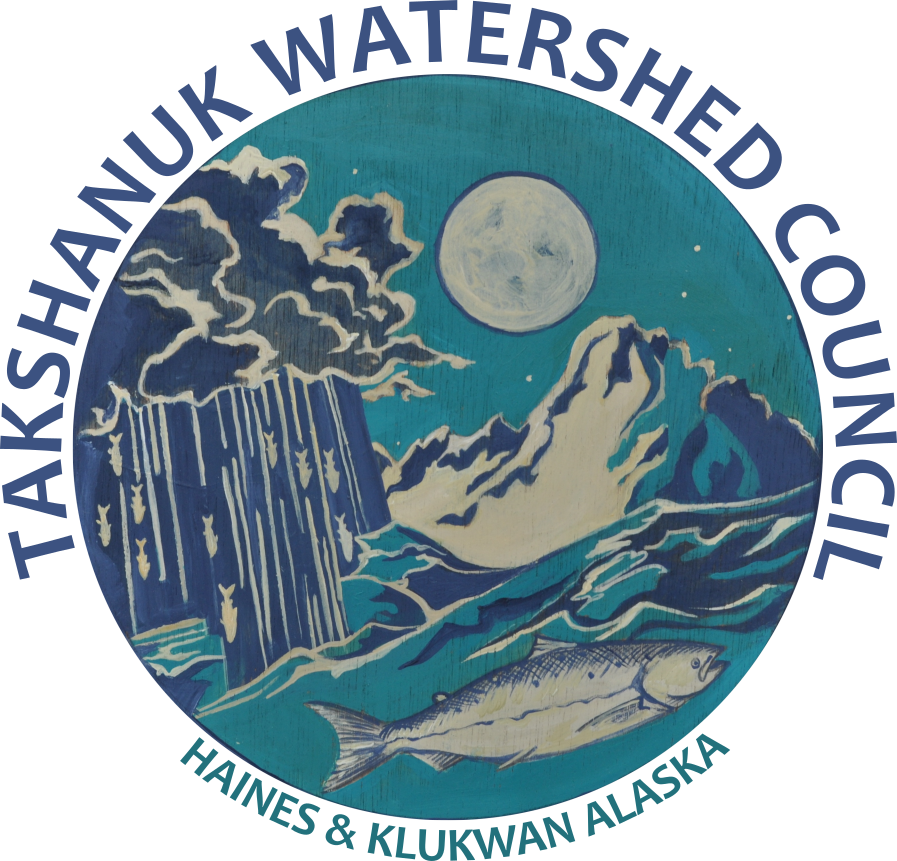
The Takshanuk Watershed Council promotes stewardship of the local rivers, lakes, and lands within the Chilkat, Chilkoot, and Ferebee watersheds surrounding Haines, Alaska through activities that support habitat restoration, scientific research, and environmental education.
